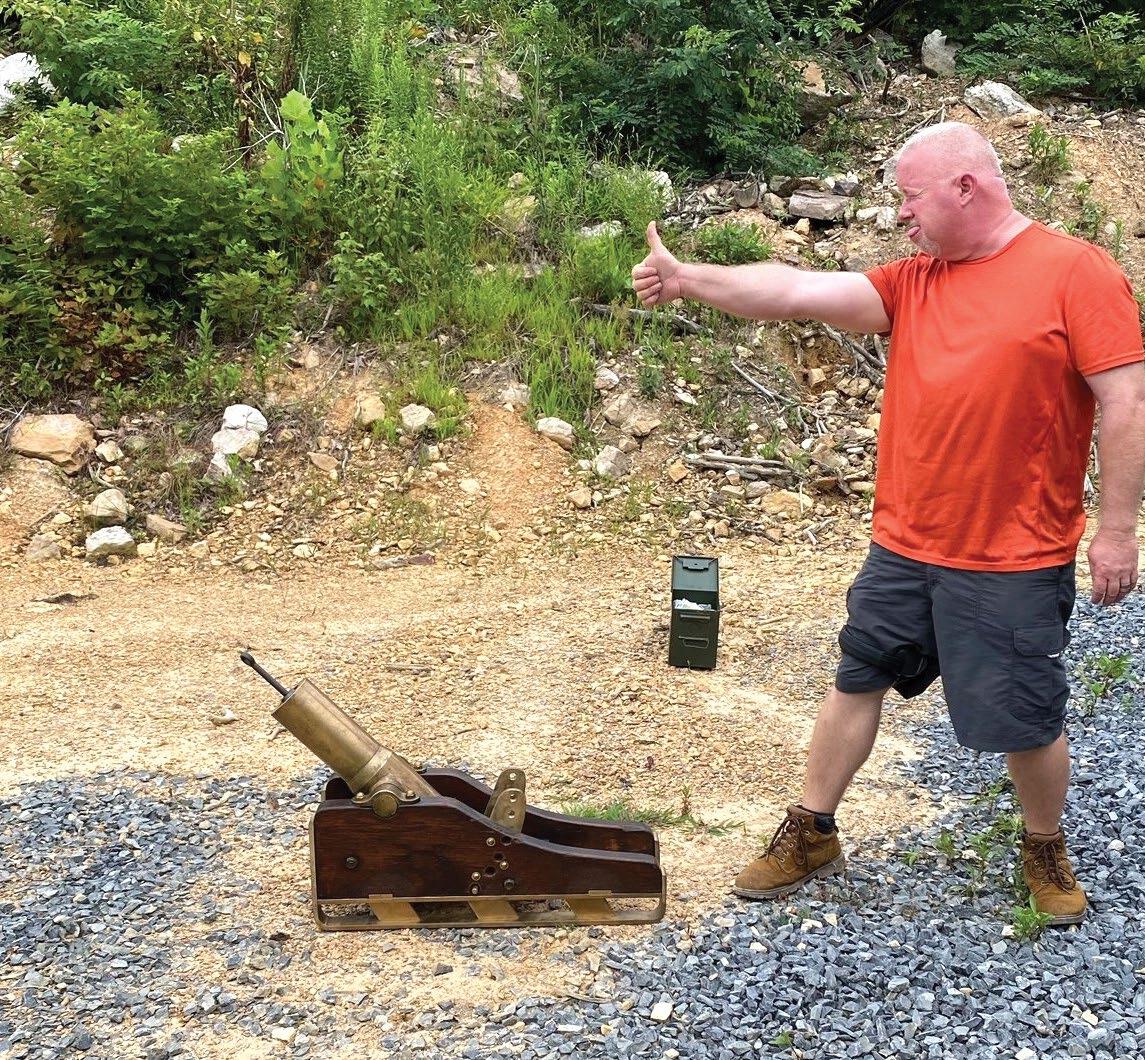
2 minute read
The Lyle Gun
Mike Nugent, PM Potomac Lodge No. 5
Potomac Lodge No. 5 has a tradition of hosting a camping weekend for our Brethren in the summer. One of the best loved activities of this weekend getaway is our day at the shooting range. On this year’s trip, I brought a special treat and a bit of a history lesson—a Lyle gun.
Advertisement
Since men put to sea, ships have been at danger and lost. In a storm, time is measured in hours before a vessel is broken apart, and many were impaled by the rocks near shore. In fact, sometimes ships were very, very close to shore when they were lost. We think of shore as the safe area, however, often it did not matter as men on the shore watched from close by, helpless to the ships flailing near them in heavy seas, left as mere observers while nature took property and lives right in front of them.
Not long after the Civil War ended, a new lieutenant was minted at West Point in 1869. His name was David A. Lyle, and his specialty was ordinance. Lyle was given an early assignment to invent a practical device to send a small rope from shore to a nearby ship in peril, and after many failures and iterations, Lyle developed a system that included an accurate, light weight, bronze gun that shot a rope—quite literally a lifeline—to nearby ships in peril.
Beginning in 1878, this kit of many ropes, pulleys, and other supporting devices, was put into service at each U.S. Life Saving Station across the nation’s coastline, and a law was passed mandating that no steam ship was to leave port without one. After 28 years, records indicate that by 1906, the gun saved approximately 4,500 lives, or about one life every other day.
About ten years ago, my wife and I were on vacation in Canada. At a small antique shop in the historic and beautiful port town of Quebec City, I spotted a Lyle gun for sale. Long story short, I bought the gun (my wife was angry with me for it, but she forgave me) and brought it to our Potomac camping trip this year.
The Brothers and other spectators were surprised at the distance just one ounce of black powder (the maximum load for the gun is four ounces) sent the twentypound projectile.

When aiming cannon, always hold your tongue right.


